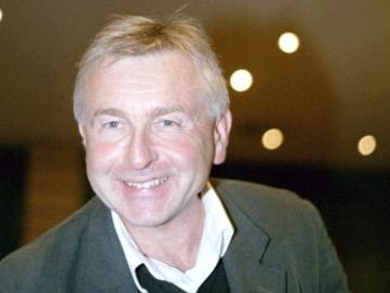Professor Emeritus Gernot Frenking, University of Marburg, Germany, celebrates his 75th birthday on January 23, 2021. Frenking’s research is focused on theoretical chemistry. His research interests include dative bonding in main-group compounds, bonding analysis of molecules with unusual bonds, and reaction mechanisms in small-molecule activation.
Gernot Frenking studied chemistry at the Rheinisch-Westfälische Technische Hochschule (RWTH) Aachen, Germany, and received his Ph.D. from the Technical University Berlin, Germany, in 1979 for theoretical work on phosphorus compounds. He finished his habilitation, also at the Technical University Berlin, in 1984. After one year as Visiting Scientist at the University of California, Berkeley, USA, working with Henry F. Schaefer III, he joined the Stanford Research Institute, Menlo Park, CA, USA, as Staff Scientist in 1985.
In 1990, Gernot Frenking became Professor for Computational Chemistry at the University of Marburg, Germany, and in 1998, was named Full Professor for Theoretical Chemistry. He remained in Marburg until his retirement in 2014. He continues his research there as Professor Emeritus and also serves as Ikerbasque Visiting Research Professor at the Donostia International Physics Center (DIPC), San Sebastian, Spain, and as Visiting Research Professor at Nanjing Tech University, China.
Among other honors, Professor Frenking has received the Elhuyar-Goldschmidt Prize from the Real Sociedad Española de Química (Spanish Royal Society of Chemistry, RSEQ) in 2007, the Schrödinger Medal from WATOC (World Association of Theoretical and Computational Chemists) in 2009, and the Hans Hellman Research Professorship Award of the University of Marburg in 2012. Among other commitments, he serves on the Editorial Board of the International Journal of Quantum Chemistry and as Editor of the Journal of Computational Chemistry.
Selected Publications
- CO‐Induced Dinitrogen Fixation and Cleavage Mediated by Boron,
Guohai Deng, Sudip Pan, Xuelin Dong, Guanjun Wang, Lili Zhao, Mingfei Zhou, Gernot Frenking,
Chem. Eur. J. 2020.
https://doi.org/10.1002/chem.202004357 - The bonding situation in heteromultimetallic carbonyl complexes,
Alexandre O. Ortolan, Giovanni F. Caramori, Renato L. T. Parreira, Renato P. Orenha, Alvaro Muñoz-Castro, Gernot Frenking,
Dalton Trans. 2020, 49, 16762–16771.
https://doi.org/10.1039/d0dt02916e - Generation and Identification of the Linear OCBNO and OBNCO Molecules with 24 Valence Electrons,
Guohai Deng, Sudip Pan, Jiaye Jin, Guanjun Wang, Lili Zhao, Mingfei Zhou, Gernot Frenking,
Chem. Eur. J. 2020, 27, 412–418.
https://doi.org/10.1002/chem.202003886 - Chemical Bonding and Bonding Models of Main-Group Compounds,
Lili Zhao, Sudip Pan, Nicole Holzmann, Peter Schwerdtfeger, Gernot Frenking,
Chem. Rev. 2019, 119, 8781–8845.
https://doi.org/10.1021/acs.chemrev.8b00722 - Observation of alkaline earth complexes M(CO)8 (M = Ca, Sr, or Ba) that mimic transition metals,
Xuan Wu, Lili Zhao, Jiaye Jin, Sudip Pan, Wei Li, Xiaoyang Jin, Guanjun Wang, Mingfei Zhou, Gernot Frenking,
Science 2018, 361, 912–916.
https://doi.org/10.1126/science.aau0839 - Dative Bonds in Main-Group Compounds: A Case for More Arrows!,
Gernot Frenking,
Angew. Chem. Int. Ed. 2014, 53, 6040–6046.
DOI: 10.1002/anie.201311022 - The Chemical Bond,
Gernot Frenking, Sason Shaik,
Wiley-VCH, Weinheim, 2014.
ISBN: 978-3-527-33318-9 - Energy decomposition analysis,
Moritz von Hopffgarten, Gernot Frenking,
Wiley Interdiscip. Rev.: Comput. Mol. Sci. 2012, 2, 43–62.
DOI: 10.1002/wcms.71 - Synthesis and Characterization of a Neutral Tricoordinate Organoboron Isoelectronic with Amines,
Rei Kinjo, Bruno Donnadieu, Mehmet Ali Celik, Gernot Frenking, Guy Bertrand,
Science 2011, 333, 610–613.
https://doi.org/10.1126/science.1207573 - The Nature of the Bonding in Transition-Metal Compounds,
Gernot Frenking, Nikolaus Fröhlich,
Chem.Rev. 2000, 100, 717–774.
https://doi.org/10.1021/cr980401l
Also of Interest
- Octacarbonyl Anion Complexes of the Late Lanthanides,
ChemistryViews.org 2019.
Assessing the 32-electron rule proposed almost 100 years ago - Calcium & Co. Acting Like Transition Metals,
ChemistryViews.org 2018.
Eight-coordinate alkaline earth-carbonyl complexes found - Why Does C2 Cause so Many Problems?,
Anne Deveson, Dieter Cremer, Gernot Frenking, Mario Piris, Sason Shaik,
ChemViews Mag. 2016.
https://doi.org/10.1002/chemv.201600022
The bonding situation in the carbon dimer is a controversial topic - Double Donation at Work in “Carbones”,
ChemViews Mag. 2013.
The carbon compounds “carbones”, recently discovered, have now been shown to stabilize cations other than BH2+ - New Type of Metal-Carbon Bond,
David Bradley,
ChemistryViews.org 2013.
A new type of metal-carbon bond that forms at the edges of aromatic compounds could open up a new field of structures - How Many Atoms Fit Into C60,
ChemViews Mag. 2011.
How many rare gas atoms can be placed into a fullerene cage until the pressure becomes large enough to break the framework?




